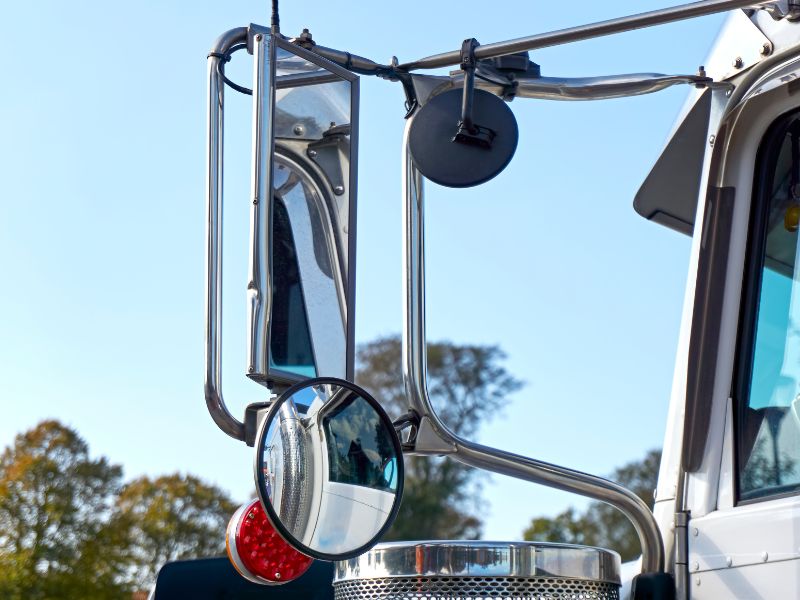
Commercial trucks have huge blind spots compared to passenger cars. Motorists traveling in these areas are entirely out of the trucker’s field of vision. All drivers must exercise caution in these scenarios, especially on congested roads or when traveling at high speeds. Blind spot truck accidents can happen in an instant, causing serious injuries and leaving victims emotionally and financially depleted.
Here’s what you need to know about blind spot accidents in Florida: what they are, why they happen, how you can avoid them, and what to do if you get hurt in a crash.
Understanding Blind Spots on Large Trucks
A truck’s blind spot (“No Zone”) is the area around a commercial vehicle where the truck driver cannot see surrounding vehicles. Truck and bus drivers must account for these large gaps in visibility when traveling on streets and highways.
Similarly, motorists must exercise caution in a truck’s blind spots. Generally, if you can’t see a truck driver’s face in their side mirror, they probably cannot see you. Driving in a truck’s blind spot significantly increases the risk of collision.
The size, height, and layout of large trucks mean they have four blind spots where a car virtually disappears from view:
- Front – A blind spot exists directly in front of trucks, extending at least 20 feet ahead.
- Back – A truck’s rear blind spot extends 30 feet behind the trailer.
- Left side – The truck’s driver-side blind spot extends outward for one lane and nearly three-fourths to the trailer’s back.
- Right side – A truck’s passenger side has a large blind spot that extends outward for two lanes.
The Impact of Blind Spot Truck Accidents
The number of semi-truck accident injuries in Florida is alarming. The Florida Department of Highway Safety and Motor Vehicles (FLHSMV) found that in a single year, 29 people died and 107 others suffered incapacitating injuries in large truck accidents. Another 449 sustained non-incapacitating injuries. Over 1,000 drivers reported “possible injuries,” saying they experienced pain or a short moment of unconsciousness after the truck crash.
Blind spot truck accident victims often suffer severe life-threatening injuries, including traumatic brain injury, spinal cord injury, broken bones, and internal bleeding. Medical bills accumulate, and catastrophically injured victims may be unable to work. Trucking accidents can also trigger psychological and emotional symptoms such as PTSD, flashbacks, nightmares, depression, and anxiety.
Legal Options After a Truck Blind Spot Crash
Consulting a Florida blind spot truck accident attorney is crucial to learn your legal rights. You could be entitled to recover compensation for your losses, including money to cover medical expenses, lost wages, pain and suffering, and other damages.
An experienced truck accident lawyer can also help you navigate Florida’s complex insurance claims process and personal injury laws by:
- Investigating the truck crash
- Placing an estimated value on your truck accident claim
- Negotiating with the insurance company, truck company, and other liable parties
- Representing you in court if necessary
Truck Safety Tips for Drivers
Preventing truck blind spot crashes is a shared responsibility. Drivers of smaller vehicles should learn about commercial truck blind spots, practice defensive driving, give trucks extra space, and avoid lingering in the No-Zones. Truckers should follow state and federal trucking regulations designed to lower the risk of a tractor-trailer accident, such as regularly checking their mirrors, changing lanes carefully, using their signal lights, and avoiding distracted driving.
Contact a Blind Spot Accident Lawyer Today
Have you been hurt in a Florida blind spot truck accident? The lawyers at Paul Knopf Bigger can answer your questions in a free consultation. Contact us today to learn what your claim could be worth.
 Skip Navigation
Skip Navigation
